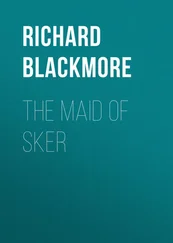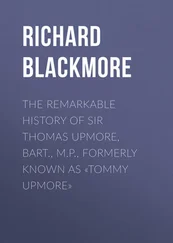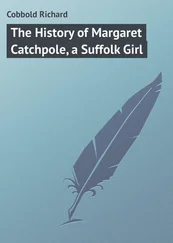The Mount Nelson’s garden was decked in the flags of France, Britain, Russia, Poland and the United States. Jay Gruneberger had been keeping watch at the fountain for an hour, wondering whether Piet Barol would follow his advice and come to the hotel. He half wished not, but had been unable to resist making the suggestion and providing the young man with the means to act on it. He saw Piet as soon as he appeared on the terrace with a young woman in a peppermint-green dress and knew at once that there would be no repeat of their shipboard revelry. He was more relieved than regretful. His hand stopped shaking and he turned to Albert Verignan, who had been attempting all morning to wheedle from him a repeatable pronouncement on the international situation.
“There will be no European war,” he said, partly for the pleasure of annoying his host. “Anyone can see it would mean the end of the world.”
Piet and Stacey were shown upstairs to a private parlor that opened onto the largest bedroom Piet had ever seen. It was wonderfully light and pretty, with a paper of pink and blue spring flowers and a bath in which it was possible to lie at full stretch without touching the ends. Beneath their windows the city beckoned like a temptation. “We will plan your assault on this colony after lunch,” said Stacey, removing her hat. “But first things first.”
Three days of rapturous lovemaking followed, during which the Vicomte and Vicomtesse Pierre de Barol spent twenty-seven pounds of Jay Gruneberger’s money and drank an awful quantity of champagne. The girth and enduring solidity of Piet’s cock were attributes of which Stacey made full and inventive use. As he watched her lower herself onto him, squealing as she found the angle she wanted, he thought how infinitely preferable this was to the froideur with which Jacobina Vermeulen-Sickerts had treated him.
He used the expertise he had gained from that lady to excellent effect, and the frankness of Stacey’s compliments redoubled his eagerness to please her. It was the first time either of them had had such opportunities for uninterrupted pleasure and as the days and nights slipped into one another their ecstasies became tender. In calmer interludes Piet learned the story of Stacey’s vicomte , her flight from her family and her hatred of Germaine Lorette. At her prompting he confided the circumstances of his childhood and his expulsion from Herengracht 605. This perilous honesty forged a bond that sex — in bed, in the bath, on the sofa of the sitting room, over the desk as its crystal inkwell rattled — cemented and confirmed.
By the morning of the fourth day Piet’s cock was red and swollen, thoroughly chafed by its addictive exertions.
“I’m bound to be pregnant,” remarked Stacey to the jasmine-scented breeze as they sat over breakfast on their balcony.
“Then we must marry at once.”
“I rather hoped you’d say that.” She reached for a silver pot of hot chocolate and turned to him with a serious expression. “To be practical for a moment. You must foreswear all other women. You may flirt as much as you like. Indeed it may be necessary for you to do so. But you are never to touch beyond the wrists.”
“Agreed.”
“And men too. St. Helena or no St. Helena.”
“I promise.”
“Certain people will dislike you on principle. It is the disadvantage of being charismatic and good-looking. Many more men will hate you than women. They will be my special responsibility. Instead of holding you back, they will be decisive in our success. I do not see how we can possibly fail.”
“We will certainly do better together than apart.”
“Of that,” she murmured, taking his hands in hers and kissing them, “I have no doubt at all.”
To be continued
I am deeply grateful to all those who helped me to imagine and write History of a Pleasure Seeker. I first told the story to Pieter Swinkels and Jolanda van Dijk, of De Bezige Bij, and later to my wonderful Dutch editor Peter van der Zwag. The Fonds voor de Letteren and the NLPVF made possible an extended stay in Amsterdam, where Bert Vreeken and the staff of the Willet-Holthuysen Museum were extremely generous with their knowledge and time. My Dutch researcher Irene Lannoye worked tirelessly translating documents and advising on names and other details; without her this book would have taken ten years longer to write. I am grateful, too, to William H. Miller Jr. for his superb work on ocean liners, Brian Fernandes, Marianne Schonbach, Fleur van Koppen, the Van Loon Museum, the Goethe Institute Amsterdam, the Athenaeum Bookshop, Daniel Viehoff, Pieter Rouwendal, Harriet Sergeant, Anne-Catherine Gillet, Will Hartman, Nancy Herralda, Andrea Wulf, Michael Bawtree, Dominic Treadwell-Collins, Lyle Saunders, Annika Ebrahim, Anne-Marie Bodal, Fanny Adler, Peter Adler, Ian Ross, George Shilling, Victoria Wilson, Irène Némirovsky, Kirsty Dunseath, Kathleen Anderson, Patrick Walsh, Jane and Tony Mason, Benjamin Morse, the staff of the National Library of South Africa and the Mount Nelson Hotel, Cape Town — and, of course, to Fryderyk Chopin, J. S. Bach, Georges Bizet and Coco Chanel.












